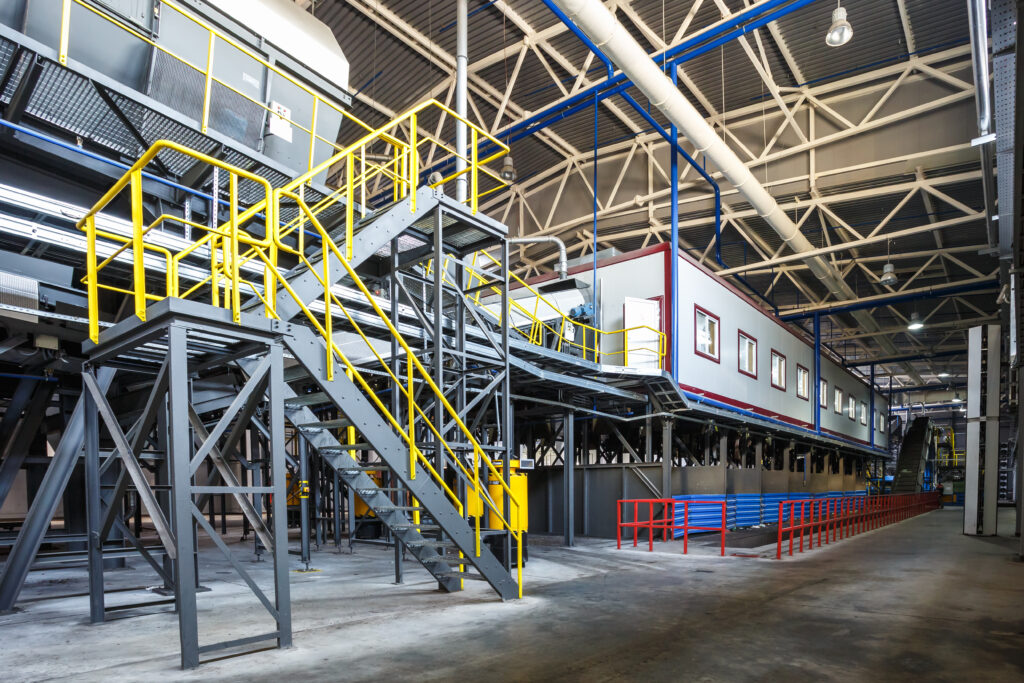Mezzanine Floor vs Pallet Racking: The Ultimate Guide
Mezzanine Floors, Pallet Racking
In today’s competitive business landscape, warehouse space comes at a premium. As organisations grow and expand their operations, the need for additional storage becomes increasingly critical. When looking upward for solutions, two prominent options emerge: mezzanine floors and pallet racking systems. Both solutions utilise vertical space effectively but serve different purposes and offer distinct advantages. This comprehensive guide will help you determine which vertical storage solution best aligns with your operational requirements.
Understanding Vertical Storage Fundamentals
What Is a Mezzanine Floor?
A mezzanine floor is a semi-permanent structure installed between the floor and ceiling of a warehouse, effectively creating an additional level within the existing space. These mezz floors are custom-designed to fit your specific warehouse dimensions and can serve multiple purposes, including storage areas, office space, production zones, or retail display areas.
Warehouse mezzanine floors essentially double your usable floor space without the substantial costs associated with physical warehouse expansion or relocation. They represent a significant capital investment but offer remarkable versatility for growing businesses.
What Is Pallet Racking?
Industrial pallet racking consists of vertical frames and horizontal beams that create multiple levels of storage specifically designed for palletised goods. These warehouse racking systems are modular, adjustable, and optimise vertical space whilst maintaining accessibility to individual pallets.
Pallet racking systems are purpose-built to maximise storage density in warehouses that handle primarily palletised inventory. Their modular nature allows for reconfiguration as storage needs evolve, making them an adaptable solution for dynamic operations.
Critical Comparison Factors to Consider

Space Utilisation Capabilities
Mezzanine Flooring Advantages:
- Creates a complete additional level, effectively doubling your floor space
- Provides continuous open areas that can be used flexibly for various operations
- Allows for multiple activities to occur simultaneously within the same footprint
- Typically utilises space up to 50% of the building height
Pallet Racking Advantages:
- Can utilise nearly the entire ceiling height (up to 12+ metres)
- Creates narrow aisles between racks, maximising storage density
- Specialises in efficient pallet storage with optimised spatial arrangement
- Provides direct access to individual pallets without disturbing others
A warehouse mezzanine floor transforms your vertical space into a multi-functional area, whilst industrial pallet racking maximises storage capacity for standardised palletised goods. Your choice should align with whether your primary need is for additional functional space or increased storage density.
Investment Requirements and Installation Complexity
Mezzanine Floor Considerations:
- Higher initial investment (£150-380 per square metre depending on specifications)
- Require structural engineering assessments, planning permission, and potentially HVAC/sprinkler system modifications
- Installation timeframe: 2-6 weeks depending on size and complexity
- Represent a significant capital improvement to your facility
Pallet Racking Considerations:
- Lower initial cost (£55-120 per pallet position)
- Simpler installation process with minimal operational disruption
- Installation timeframe: days to a couple of weeks
- Modular design allows for reconfiguration or expansion as needs change
The financial implications extend beyond the initial investment. A mezz floor adds significant value to your property and creates usable space for diverse business functions. Warehouse racking systems offer more immediate return on investment for operations focused primarily on efficient inventory storage and management.
Versatility and Functional Applications
Mezzanine Flooring Capabilities:
- Multi-purpose: suitable for storage, offices, production, picking operations
- Support diverse operations within the same warehouse footprint
- Can incorporate conveyor systems, elevators, or staircases for efficient movement
- Create entirely new work environments with proper lighting and climate control
Pallet Racking Capabilities:
- Primarily designed for efficient pallet storage and retrieval
- Specialised configurations available (drive-in, push-back, flow racks)
- Excellent for inventory management and FIFO/LIFO systems
- Optimised for standardised pallet dimensions and handling equipment
A mezzanine floor extends your operational capabilities by creating entirely new functional spaces, whilst a warehouse racking system focuses on maximising the efficiency of your storage operations. The right choice depends on whether your business needs additional functional areas or optimised storage for standardised inventory.
Operational Accessibility and Handling Requirements
Mezzanine Floor Accessibility:
- Require stairs, lifts, or conveyors for personnel and material access
- Allow staff to work comfortably on an additional level with proper amenities
- Need appropriate safety railings and adequate floor load capacity ratings
- Support both manual and mechanical handling operations with proper design
Pallet Racking Accessibility:
- Require forklifts or other lifting equipment for accessing upper levels
- Limited personnel access to stored items (primarily equipment-based retrieval)
- Enable direct access to specific pallets without moving others
- Designed specifically for efficient forklift operations and pallet handling
Your existing material handling equipment and operational workflows should influence your decision. If your operations already utilise forklifts extensively, a warehouse racking system naturally integrates with these processes. If your business would benefit from creating additional workspace for personnel, a mezzanine floor offers significant advantages.
Determining the Ideal Solution for Your Operation

When to Choose a Mezzanine Floor
Consider implementing a mezzanine floor when:
- Your business requires flexible, multi-purpose space beyond storage alone
- Your operations would benefit from separating different functions vertically
- You need areas where personnel work regularly (offices, assembly, packing)
- You’re planning for long-term growth with a permanent spatial solution
- Your building has sufficient height clearance (minimum 5+ metres)
- You want to maximise the value of your existing facility
A mezzanine floor represents a transformative investment that fundamentally changes how you utilise your warehouse space, creating entirely new functional areas for diverse business activities.
When to Choose Pallet Racking
Consider implementing industrial pallet racking when:
- Your primary operational need is efficient, high-density pallet storage
- You operate with standardised pallet sizes and quantities
- You have appropriate lifting equipment (forklifts) already in operation
- Your inventory management requires quick access to specific pallets
- Your storage needs fluctuate frequently, requiring flexible reconfiguration
- You need to maximise vertical storage within budget constraints
A warehouse racking system offers targeted efficiency for palletised inventory management, optimising your storage density whilst maintaining accessibility to individual pallets when needed.
Implementing Hybrid Solutions for Optimal Efficiency
Many successful warehouses implement both solutions strategically, creating complementary systems that maximise efficiency across different operational areas:
- Install pallet racking in high-bay areas for bulk storage of palletised inventory
- Construct mezzanine floors over pick/pack operations or loading areas
- Develop mezzanine-supported racking systems that combine elements of both
- Use mezzanine areas for value-added services and pallet racking for raw materials
This integrated approach allows you to optimise both storage density and functional space utilisation within the same facility, addressing diverse operational requirements simultaneously.
Essential Considerations for Your Decision Process
Before finalising your vertical storage strategy, evaluate these critical factors:
- What is your primary operational need: storage density or multi-functional space?
- What’s your budget for both immediate installation and ongoing operational costs?
- How stable are your storage requirements, or do they fluctuate seasonally?
- What material handling equipment do you currently utilise?
- What is the height clearance in your facility?
- What building regulations and safety codes will impact your installation?
- How might your business needs evolve over the next 3-5 years?
Thoroughly assessing these factors with your operations team and storage solution provider will guide you toward the optimal vertical storage strategy for your specific circumstances.
Final Thoughts: Investing in Your Warehouse’s Vertical Potential
Both mezzanine floors and pallet racking offer valuable solutions to maximise vertical space in warehouses. While industrial pallet racking excels at efficient, high-density storage with direct access to individual pallets, mezzanine flooring provides versatile, multi-purpose space that can transform your operational capabilities.
The optimal solution depends on your specific business requirements, budgetary constraints, and long-term growth strategy. By carefully evaluating the factors outlined in this guide, you can make an informed decision that enhances your warehouse efficiency and supports your business objectives.
Whatever vertical storage solution you select, investing in your warehouse’s vertical potential represents a strategic approach to expanding capacity without incurring the substantial costs and disruption associated with physical warehouse expansion or relocation. The right vertical storage strategy will position your business for sustainable growth and operational excellence in today’s competitive marketplace.
For information on our wide range of warehouse solutions contact us here.

